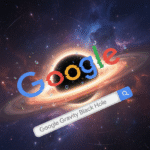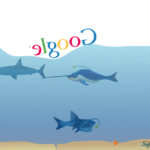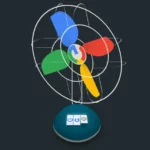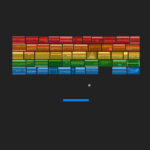Google Gravity Easter Egg
Google Gravity is a captivating web-based physics simulation that applies gravitational effects to Google’s search page elements.
This interactive Easter egg transforms the familiar Google homepage into a dynamic playground where search bars, buttons, and links fall and can be manipulated like physical objects.
What is Google Gravity?
Google Gravity simulates realistic gravitational physics on Google’s search interface. When activated, all page elements including the search bar, navigation buttons, and text fall to the bottom of the screen due to simulated gravity.
Users can then interact with these fallen elements by clicking and dragging them around the screen, creating an engaging and playful browsing experience.
History and Development
Google Gravity was created in 2009 as part of web experiments designed to showcase the advanced capabilities of modern web browsers and demonstrate innovative uses of web technologies.
The project gained recognition when it was featured in Google’s Chrome Blog in 2012 as part of their Chrome Experiments showcase, highlighting its innovation in interactive web design.
The current version includes several enhancements to ensure modern compatibility and functionality, including API emulation for search capabilities, mobile optimization, and theme options.
Google Gravity Features and Functionality
Interactive Elements
- Gravity Physics: All page elements respond to simulated gravitational forces
- Drag and Drop: Click and drag fallen elements to reposition them
- Functional Search: Perform real Google searches within the gravity environment
- Theme Toggle: Switch between light and dark modes
- Mobile Responsive: Full functionality on touch devices
Technical Capabilities
Google Gravity maintains visual appeal while providing practical functionality. The search bar remains fully operational, displaying actual search results even after elements have fallen due to gravity effects.
How to Use Google Gravity
Step-by-Step Instructions
- Access the Tool: Visit the Google Gravity page
- Wait for Loading: Allow the page to fully load
- Watch the Fall: Observe as all Google elements fall to the bottom of the screen
- Interact: Click and drag elements to move them around
- Search: Type queries in the search bar and press Enter to get results
- Toggle Themes: Use the dark mode button to switch between light and dark themes
Browser Compatibility
Google Gravity works on all modern browsers including:
- Chrome
- Firefox
- Safari
- Edge
- Mobile browsers (iOS Safari, Chrome Mobile)
Conclusion
Google Gravity represents a perfect blend of creativity, technical innovation, and user engagement. This beloved web experiment remains accessible and functional for modern users through continued development and maintenance.
By successfully implementing API emulation, mobile compatibility, and user-friendly features like dark mode, Google Gravity preserves an important piece of web history while remaining relevant for today’s internet users.
Whether you’re a web developer seeking inspiration, a student learning about interactive design, or simply someone looking for a fun way to experience Google’s interface, Google Gravity offers a unique and memorable browsing experience that showcases the creative potential of web technologies.





